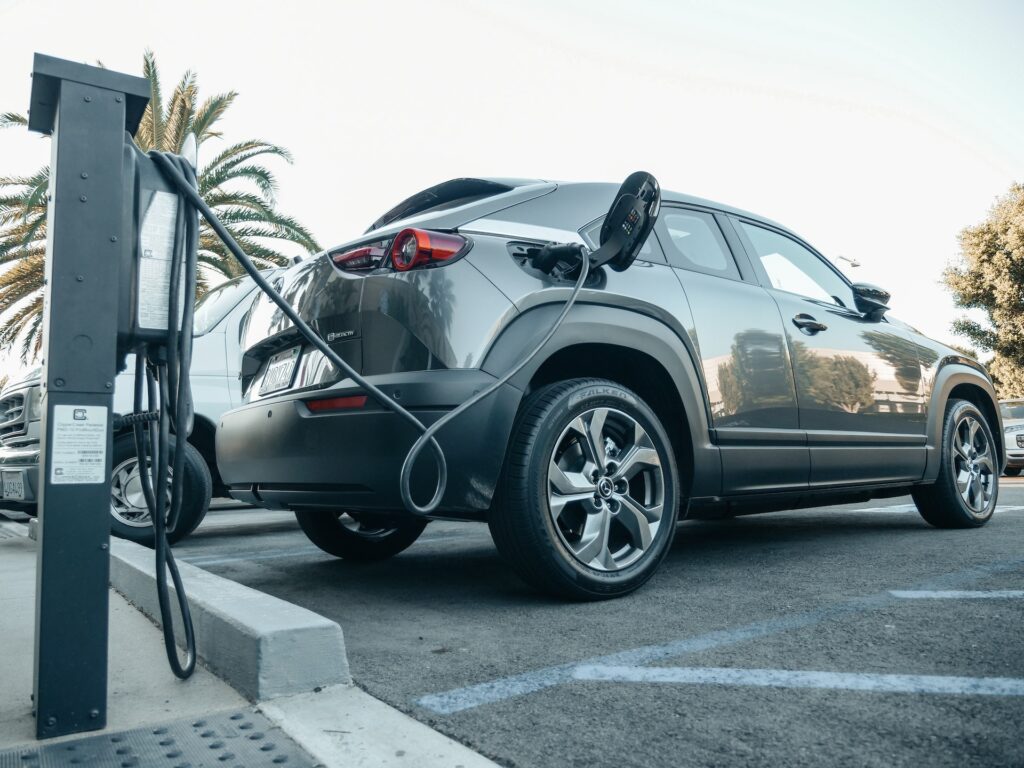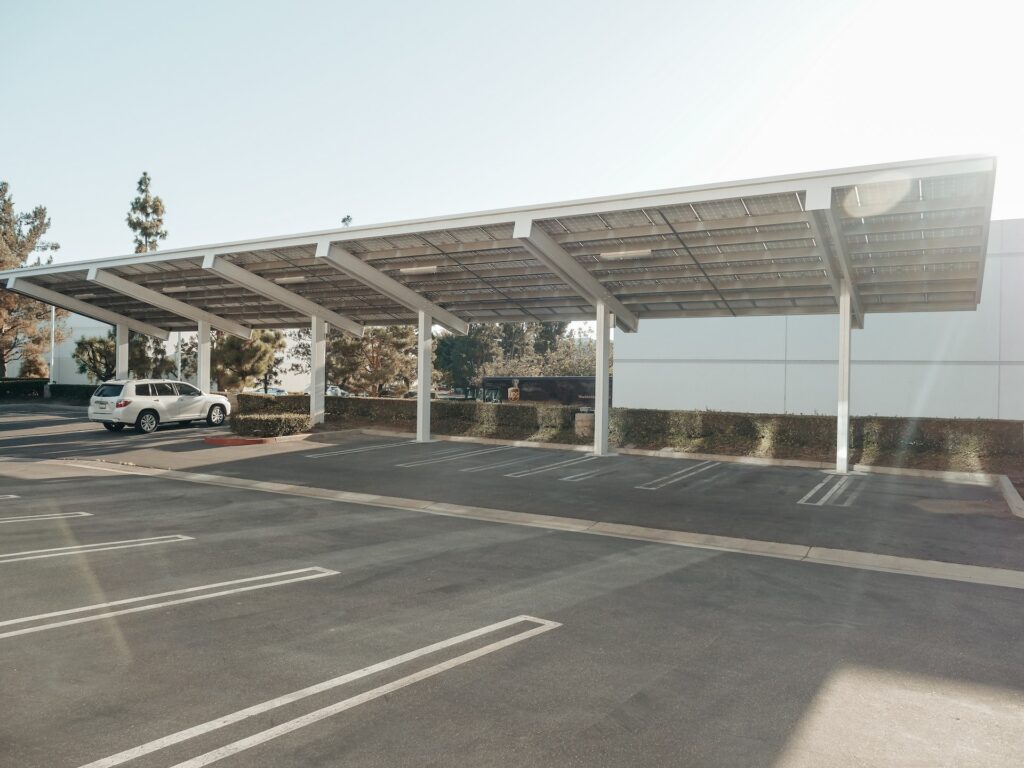A parking lot is a designated area, typically paved and organized, where vehicles can park temporarily or for an extended period. These lots are crucial in modern urban and suburban landscapes, providing safe and convenient spaces for vehicle owners to leave their cars while attending various activities. You’ll likely encounter a parking lot nearby when visiting a shopping mall, office building, hospital, or public venue. In this article, we’ll delve into the essentials of a parking lot, its significance, and the different types of parking facilities available.
The Basics of a Parking Lot
A parking lot is a dedicated space, often flat and paved, designed to accommodate vehicles systematically. The layout and design of parking lots vary widely, ranging from simple surface lots with rows of marked spaces to elaborate multi-story parking structures. They can be privately owned and managed by businesses or public entities, and they serve as essential components of urban infrastructure, facilitating convenient access to various destinations.
Critical Components of a Parking Lot
-
Marked Parking Spaces
Parking lots have marked parking spaces restricted by painted lines on the ground. Each area is typically sized to fit a standard car, providing ample room for vehicles to park without obstructing others.
-
Traffic Flow and Aisles
Parking lots are designed with organized traffic flow in mind. Aisles between rows of parking spaces allow easy movement within the lot, ensuring smooth ingress and egress.
-
Signage and Directional Markings
Parking lots have signs and directional markings to guide drivers to available spaces, exits, and entrances. Clear and visible signage is essential for maintaining an orderly flow of traffic.
-
Lighting
Adequate lighting is critical for the safety and security of both vehicles and pedestrians using the parking lot, especially during nighttime hours.
-
Safety Features
To enhance safety, parking lots may have speed bumps, crosswalks, pedestrian walkways, and designated handicapped parking spaces in compliance with accessibility regulations.
Parking lots are vital components of urban infrastructure, providing a convenient solution to the parking needs of vehicles in bustling cities and busy locations. They facilitate easy access to various shopping, business, or leisure destinations. By adhering to proper traffic management, adequate signage, and safety measures, parking lots ensure a smooth flow of vehicles and enhance the overall experience of motorists and pedestrians alike. As urban areas continue growing, the importance of well-designed and managed parking lots becomes increasingly significant in fostering a functional and accessible urban environment.
Types of Parking Lots
Parking lots come in various types, each designed to accommodate specific needs and serve different purposes. The types of parking lots can vary based on their location, size, layout, ownership, and the facilities they serve. Here are some common types of parking lots:
-
Surface Parking Lots
These are the most common and basic types of parking lots found in many locations. Surface parking lots consist of open areas with paved surfaces where vehicles can park side by side. They are typically found in commercial areas, shopping centers, and public facilities.
-
Parking Garages
Also known as multilevel parking lots or structures, parking garages are multi-story buildings designed to accommodate many vehicles. They offer more parking capacity than surface lots, making them suitable for densely populated urban areas and commercial districts.
-
Rooftop Parking
Some buildings, especially in urban settings, have parking spaces on their rooftops to maximize the available parking area and optimize space usage.
-
Underground Parking
These parking lots are located below ground level, often beneath buildings or public spaces. They provide parking while minimizing the impact on the visual aesthetics of the surrounding area.
-
Parking Lots for Specific Facilities
Some parking lots are designed to accommodate specific facilities or venues, such as airports, hospitals, stadiums, and amusement park parking areas.
-
Park-and-Ride Lots
These parking lots are strategically located near public transportation hubs, allowing commuters to park their vehicles and use public transit for the rest of their journey.
-
Valet Parking Lots
Valet parking lots are usually found at hotels, restaurants, and upscale establishments. Drivers leave their vehicles with valet attendants, who park and retrieve the cars on their behalf.

-
Residential Parking Lots
These parking lots are part of residential complexes or housing communities and provide parking for residents and guests.
-
Time-Restricted Parking Lots
Some parking lots may have time restrictions, such as short-term parking for quick stops or long-term parking for extended stays.
-
Pay-and-Display Parking Lots
In pay-and-display lots, drivers purchase parking tickets from automated machines, displaying the ticket on the dashboard to indicate the paid parking duration.
-
Electric Vehicle Charging Stations
Some parking lots have electric vehicle (EV) charging stations to accommodate the growing number of electric cars.
How to Clean Parking Lots
Cleaning parking lots is essential for maintaining a clean and safer environment for customers, employees, and visitors. A well-maintained parking lot also reflects positively on your business or property. Here’s a step-by-step guide on how to clean parking lots effectively:
1. Safety Precautions
Before starting any cleaning activities, ensure you have the necessary safety gear, such as gloves, safety goggles, and sturdy footwear. Also, appropriate caution signs should be set to alert pedestrians and drivers about cleaning activities.
2. Clear Debris
Begin by removing visible debris from the parking lot surface, such as trash, leaves, dirt, and rocks. Use brooms or leaf blowers to clear larger debris, and collect the waste in trash bags or bins.
3. Power Washing
A power washer is an effective tool for cleaning parking lots. Use it to remove dirt, grease, oil stains, and grime from the surface. Adjust the pressure setting according to the dirt level and the surface type to avoid damage.
4. Remove Stains
Treat any stubborn stains or oil spots using a commercial degreaser or an environmentally friendly cleaning solution. Scrub the stains with a stiff-bristled brush to help break down the residue.
5. Address Gum and Graffiti
Use specialized gum removers and graffiti removal products to clean and restore the affected areas if there are gum spots or graffiti.
6. Clean Drainage Areas
Clear any clogged drains or drainage channels to ensure proper water flow and prevent water buildup during rains.
7. Pressure Wash Sidewalks and Curbs
Don’t forget to clean sidewalks and curbs adjacent to the parking lot. Pressure wash these areas to remove dirt and stains.
8. Sweep and Collect
After power washing and treating stains, sweep the parking lot once more to collect any loose debris and residues.
9. Rinse Thoroughly
Rinse the parking lot thoroughly to eliminate any residual cleaning solution or debris. Ensure that no cleaning chemicals are left behind to prevent potential hazards.
10. Dry the Surface
Allow the parking lot to air dry entirely before reopening it to vehicles and foot traffic.
Additional Tips:
– Regularly schedule parking lot cleaning to maintain a clean and presentable appearance.
– Consider using environmentally friendly cleaning products to minimize the environmental impact.
– Regularly inspect the parking lot for cracks, potholes, or other damages and arrange for repairs promptly.
Cleaning a parking lot can be labor-intensive, so you may want to consider employing a professional cleaning service with experience in parking lot maintenance for more significant or challenging areas. A well-maintained parking lot enhances the overall impression of your property and promotes a safe and inviting environment for visitors.
In conclusion, cleaning parking lots is crucial and benefits businesses, property owners, and visitors. Maintaining a clean and well-organized parking lot creates a positive impression, enhances safety, and improves the overall experience of those using the facility.

Advantages of Maintaining a Clean Parking Lot
Each type of parking lot has advantages and suitability for different situations. The choice of parking lot type depends on location, purpose, expected traffic volume, available space, and budget considerations. Effectively designing and managing parking lots is crucial for ensuring efficient parking management and meeting users’ parking needs.
A clean parking lot offers numerous benefits for businesses, property owners, and the customers, employees, and visitors who use the parking facility. Here are some of the critical advantages of maintaining a clean parking lot:
-
Positive First Impression
A clean parking lot creates a positive initial impression for visitors and customers. It reflects positively on the business or property, conveying a sense of professionalism and attention to detail.
-
Improved Safety
A clean parking lot reduces the risks of slips, trips, and falls due to debris, oil spills, or other hazards. Maintaining a well-organized and clutter-free parking area enhances safety for pedestrians and drivers.
-
Enhanced Curb Appeal
A clean parking lot contributes to the property’s overall curb appeal. It gives a well-maintained and inviting appearance, which can attract more customers and visitors.
-
Increased Customer Satisfaction
When the parking lot is clean and well-maintained, customers are more likely to have a positive experience. This can lead to higher customer satisfaction and potentially repeat business.
-
Compliance with Regulations
Property owners must keep their parking lots clean and debris-free in many jurisdictions to comply with local regulations and maintain proper sanitation standards.
-
Extended Lifespan of the Surface
Regular cleaning of the parking lot can help extend the lifespan of the surface material, such as asphalt or concrete. Promptly removing debris and stains prevents damage and deterioration.
-
Preventing Pest Infestations
A clean parking lot reduces the presence of food debris and trash, which can attract pests like rodents and insects. Regular cleaning helps prevent pest infestations in the area.
-
Environmental Benefits
Keeping the parking lot clean helps prevent pollutants and debris from entering stormwater drains and polluting water sources. It contributes to a healthier environment and lessens the impact on local ecosystems.
-
Safer Driving Conditions
Clearing debris and ensuring a clean surface improves parking lot driving conditions. It lowers the risk of vehicle damage and potential accidents caused by obstacles or debris on the ground.
-
Compliance with Lease Agreements
For businesses leasing or renting commercial spaces, maintaining a clean parking lot may be a requirement in the lease agreement. Adhering to these terms is crucial for maintaining a positive relationship with the property owner.
A clean parking lot offers many benefits, including creating a positive impression, enhancing safety, attracting customers, and complying with regulations. Regular cleaning and maintenance of the parking lot contribute to a more pleasant and functional environment for all stakeholders involved. Whether for businesses, residential properties, or public facilities, investing in a clean parking lot is a worthwhile endeavor that yields numerous advantages.

Keep Your Parking Lots Clean
Regular cleaning – including debris removal, power washing, and addressing stains – helps extend the lifespan of the parking lot surface and prevents damage caused by accumulated dirt and grime. It also reduces the risks of slips, trips, and falls, promoting a safer environment for pedestrians and drivers.
A clean parking lot contributes to the property’s overall curb appeal, making it much more attractive to customers and visitors. It reflects a sense of professionalism and attention to detail, which can positively impact businesses and property values.
Proper parking lot maintenance ensures compliance with local regulations and sanitation standards, contributing to a healthier environment and preventing potential hazards.
To achieve these benefits, it’s essential to implement a regular cleaning schedule, use appropriate cleaning products and equipment, and consider hiring professional cleaning services for larger or more complex parking areas.
Investing time and effort into cleaning parking lots yields significant advantages, making it a worthwhile endeavor for businesses, property owners, and the community. A clean parking lot promotes safety, enhances aesthetics, and fosters a welcoming and organized environment for everyone who utilizes the parking facility.







